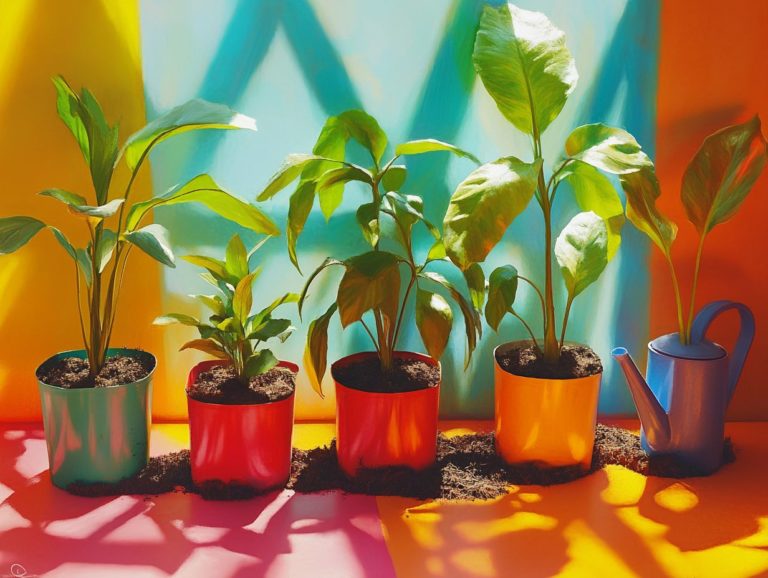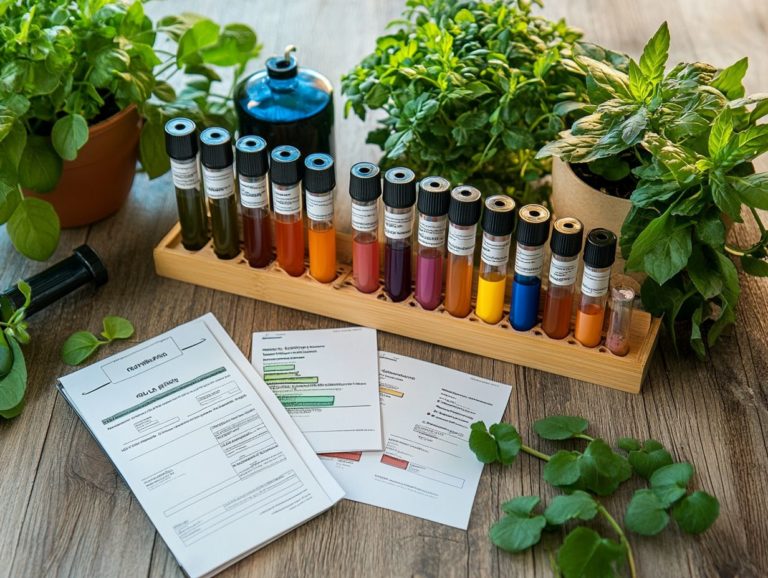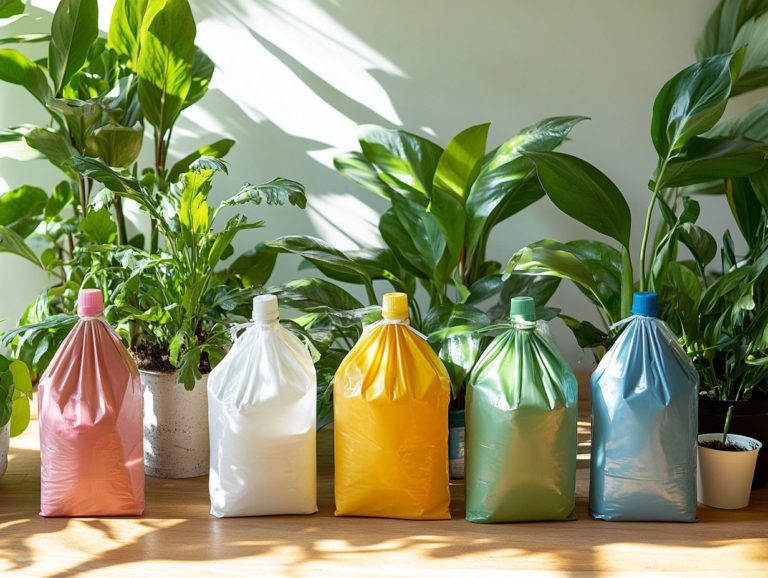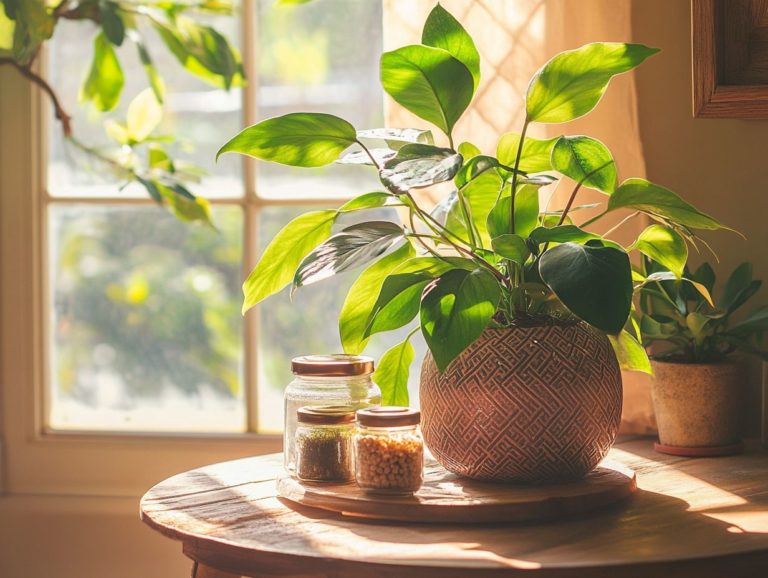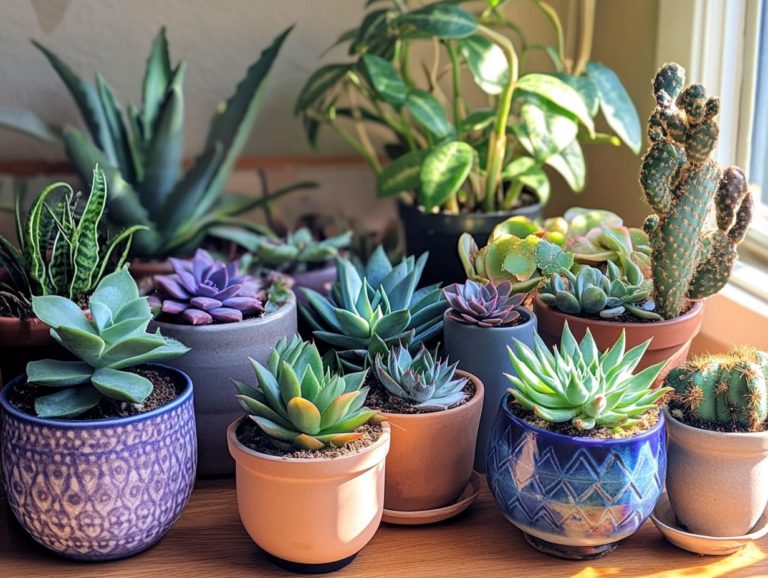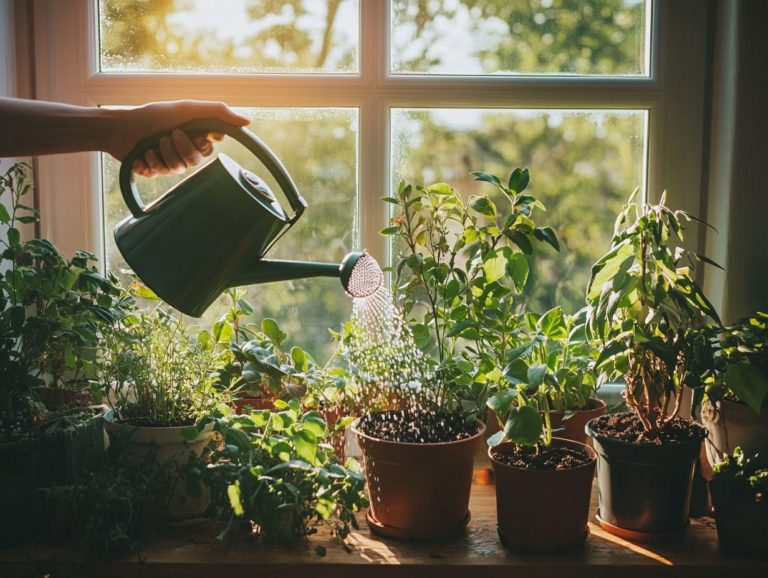What to Know About Soil for Houseplants
Soil is crucial for your plants. It anchors roots and holds essential nutrients and moisture.
This article delves into the various types of soil you can choose from, exploring their advantages and disadvantages. This article also offers practical advice on preparing and maintaining soil, along with solutions for common soil issues. Your houseplants deserve nothing but the best, so let s dive in to find the best soil for your green friends!
Contents
Key Takeaways:
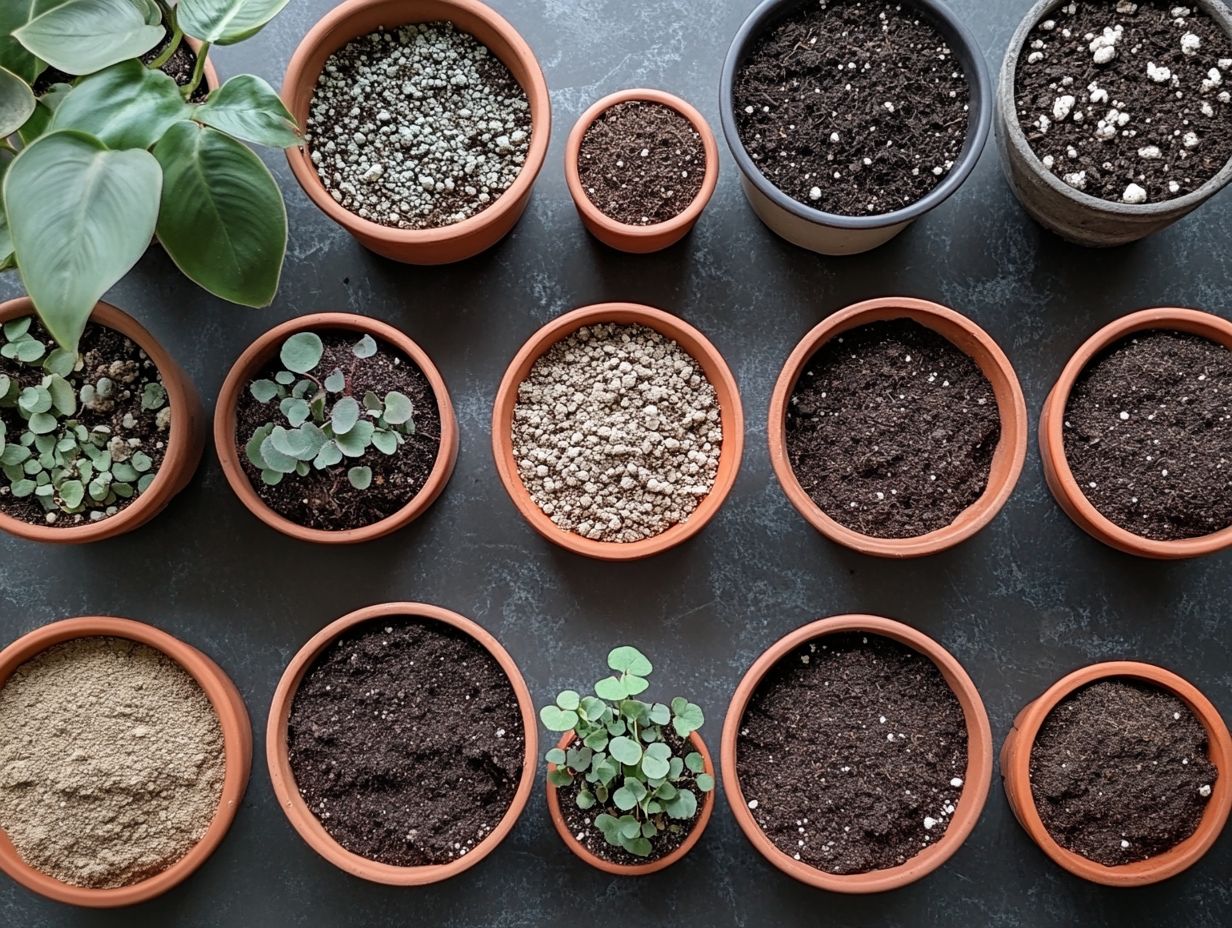
- Soil is vital for houseplant growth.
- Each soil type has its pros and cons, so understanding your plants’ specific needs is important.
- Proper soil preparation and maintenance significantly impact plant health, so check for common issues regularly.
The Importance of Soil for Houseplants
Soil plays a crucial role in nurturing your plants’ health and growth. It acts as both a foundation for anchoring roots and a reservoir for essential nutrients and moisture.
Choosing the right potting mix can elevate soil quality, creating an ideal environment for strong root development. Understanding what makes good potting soil, like drainage and moisture retention, is important for anyone passionate about indoor gardening.
Role of Soil in Plant Growth
The role of soil in your plant’s growth cannot be overstated. It provides essential nutrients and maintains moisture levels that directly influence your houseplants’ health.
Healthy soil quality determines how effectively your plants can absorb those critical nutrients and retain moisture. This makes it the foundation of successful gardening.
To maintain optimal conditions, consider using amendments like compost, organic fertilizers, and mulch. These can significantly boost soil fertility and structure. Proper soil aeration allowing air to flow through the soil is crucial for strong root development.
Adequate aeration minimizes the risk of disease by preventing excess moisture buildup. It also supports healthy microbial activity, which is essential for nutrient cycling.
Discover the Best Soil Types for Your Plants!
Selecting the ideal soil for your houseplants is crucial for fostering their growth. You have a range of options, including:
- All-purpose mixes
- Specialized soils tailored for succulents or tropical plants
- The esteemed Cornell Mix, crafted by experts in the field.
Pros and Cons of Different Soil Types
Different types of soil come with unique advantages and drawbacks that can significantly impact plant health. For instance, the Cornell Mix is celebrated for its exceptional nutrient balance and moisture retention, while other soils might prioritize drainage.
As a gardener, you need to weigh these characteristics carefully when choosing the right soil for your plants. Take clay soils, for example: they re dense and heavy, providing excellent moisture retention for water-loving plants.
However, they can easily become waterlogged, jeopardizing root health. On the flip side, sandy soils drain quickly and enhance aeration, but they often require regular amendments to maintain nutrient levels.
By grasping these distinctions, you empower yourself to make informed, strategic decisions that create optimal growth conditions tailored to your plants’ specific needs.
Choosing the Right Soil for Your Houseplants

When selecting the ideal soil for your houseplants, several crucial factors come into play. You need to consider the soil pH, moisture levels, and the unique environmental conditions that influence each type of plant.
By doing so, you’ll ensure optimal root growth and promote overall plant health. Choose the right soil today, and watch your plants thrive!
Factors to Consider
When choosing soil for houseplants, consider critical factors like soil pH, nutrient availability, and moisture retention tailored to your plants needs.
Understanding how to assess soil pH is essential for optimal growth. Soil pH directly impacts how plants take in nutrients vital for health. You can easily evaluate soil pH using inexpensive testing kits from garden centers or local agricultural offices. Once you have your results, they will guide you in determining if any amendments are necessary to achieve the ideal pH level for your houseplants.
Matching soil properties like texture and fertility with the requirements of your plants significantly enhances nutrient absorption. For instance, tropical houseplants thrive in slightly acidic soil, boosting nutrient availability. In contrast, succulents prefer well-draining, alkaline soil for optimal drought resistance.
How to Prepare and Pot Houseplants with Soil
Correctly preparing and potting your houseplants is essential for their longevity. Choose the right potting medium and ensure the soil offers adequate drainage and nutrients to support healthy roots.
These steps will set your plants up for a thriving future.
Step-by-Step Guide
This guide will illuminate the essential practices for potting your plants. Ensure you select the right potting medium and use techniques for optimal watering and drainage.
By thoughtfully choosing an ideal blend such as peat-based mix, cactus soil, or organic compost you ll create a nurturing environment that fosters healthy growth.
Start by selecting a pot with adequate drainage. Make sure it has holes at the bottom to prevent water accumulation. As you pot your plants, pay attention to their specific needs, including light and moisture levels. Additionally, understanding why soil quality matters for indoor plants can further enhance their growth and health.
After planting, mastering watering is vital. It’s not just about how much water you provide, but how you apply it. Watering from the bottom or using a gentle spray technique prevents soil displacement and ensures even moisture distribution.
Maintaining Healthy Soil for Houseplants
To keep healthy soil for your houseplants, regularly monitor and amend it. This maintains a balanced nutrient profile and helps prevent diseases and pests, nurturing plant growth.
Tips for Soil Maintenance
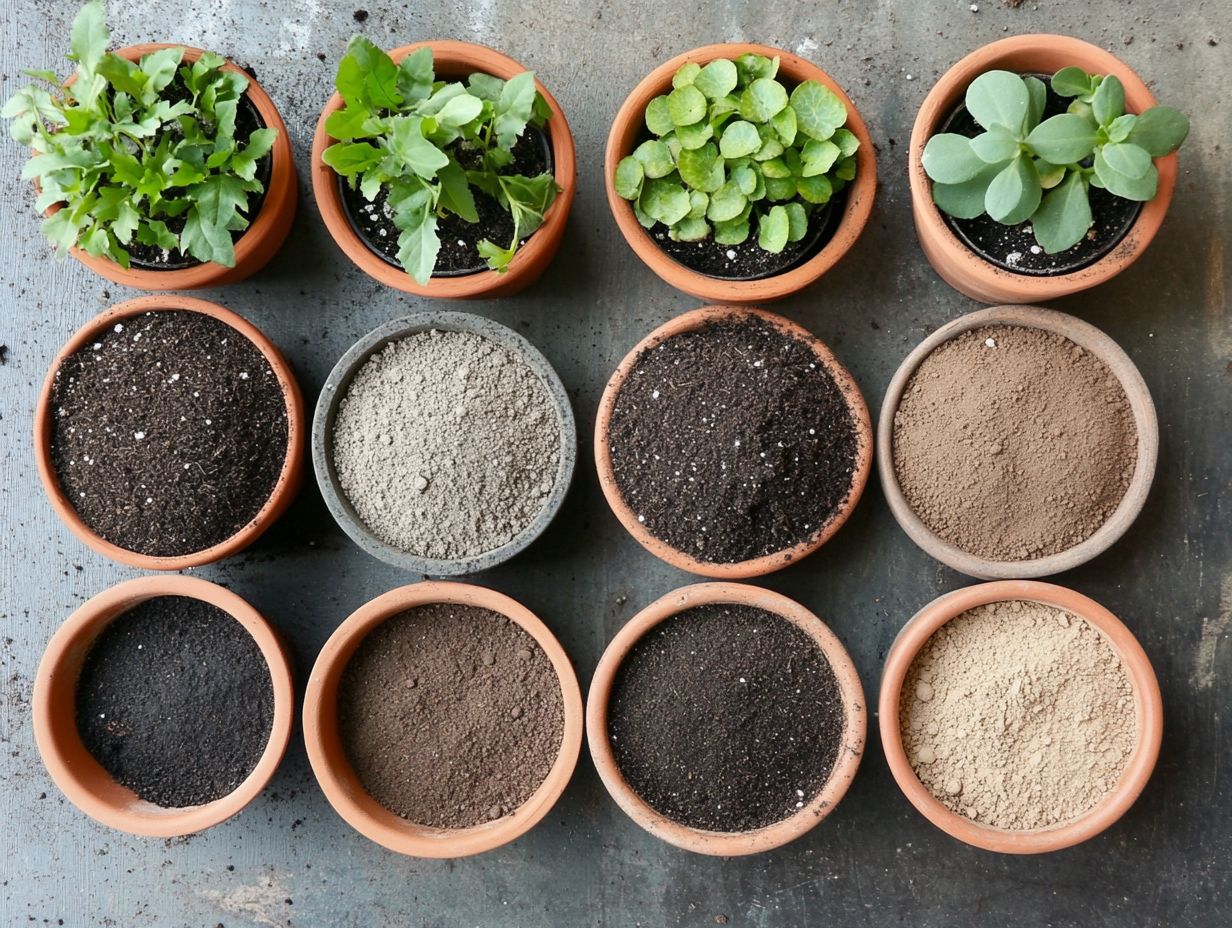
Effective soil maintenance starts with regularly checking moisture levels. Adjust soil amendments to keep nutrient balance in check, and stay vigilant about potential diseases and bugs.
To ensure your plants thrive, establish a routine for assessing soil conditions, especially moisture content. You can use moisture meters or feel the soil with your hands to know when to water or hold back. Incorporating organic amendments, such as compost or well-rotted manure, enhances both soil structure and fertility.
Stay attuned to early signs of soil diseases. Discolored leaves or stunted growth can signal underlying issues needing your immediate attention. By adapting your care strategies based on these observations, you can boost the vitality of your soil.
Common Soil Problems and Solutions
Common soil issues can impede the vitality of your houseplants. For instance, compacted soil can stifle root growth, while moisture retention problems may lead to diseases and pest infestations.
Addressing these challenges with effective solutions is essential for the flourishing of your green companions. Share your own soil maintenance tips in the comments!
Identifying and Addressing Issues
Identifying common soil problems is crucial for your houseplants’ health. Issues like uneven moisture levels, compacted soil, and unwelcome pests can hinder growth.
Start with a simple moisture test. Use your finger or a moisture meter to check if the soil is too dry or too wet.
If the soil is compacted, gently loosen the top layer. This improves air circulation, allowing roots to grow healthier.
Watch for signs of pest infestations, like wilting leaves or visible insects. Acting quickly with natural remedies or insecticides can help!
Frequently Asked Questions
Key Tips for Soil Health
Soil is vital for houseplants’ health and growth. It provides nutrients, supports root development, and regulates moisture levels.
What type of soil is best for houseplants?
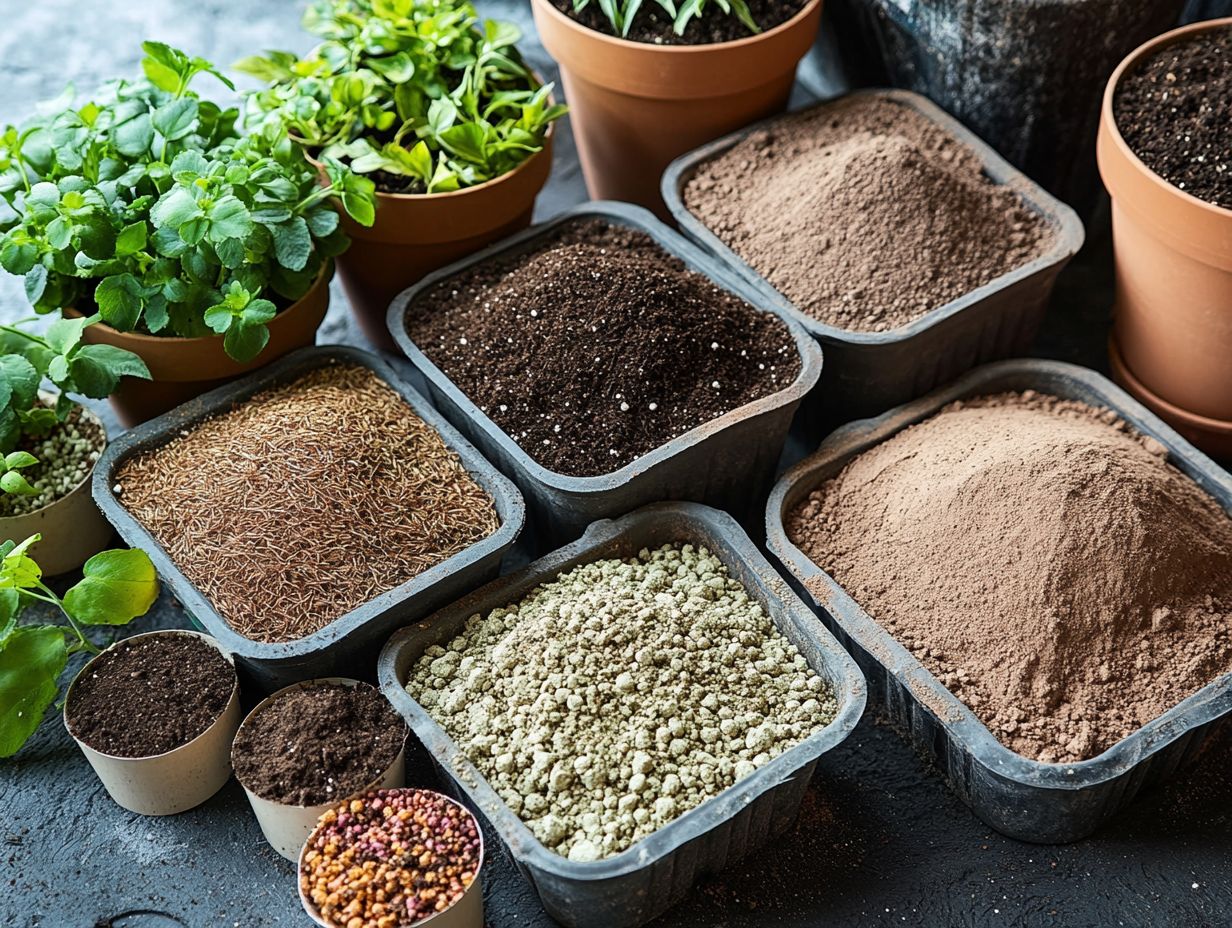
The best type of soil for houseplants is a well-draining, nutrient-rich potting mix. This mix is specially formulated for indoor plants, balancing moisture retention and aeration.
Can I use regular garden soil for my houseplants?
No, regular garden soil is not recommended for houseplants. It is too dense and retains too much moisture, leading to root rot and other issues. It may also contain pests or diseases that can harm your plants.
What ingredients should I look for in a potting mix?
- Peat moss
- Compost
- Vermiculite or perlite
A good potting mix contains these ingredients to provide nutrients, retain moisture, and improve drainage.
How often should I change the soil in my houseplants’ pots?
Change the soil in your houseplants’ pots every 1-2 years. This helps replenish nutrients and prevent compacted soil that hinders root growth. If your plant shows signs of distress or overcrowding, consider repotting sooner.
Can I reuse soil from old plants for new ones?
Yes, you can reuse potting mix from old plants, but refresh the soil first. Remove any leftover roots and debris, and mix in some fresh compost or fertilizer. This will help replenish nutrients and ensure the soil is aerated.
Start checking your soil today and try these tips for better plant health!

